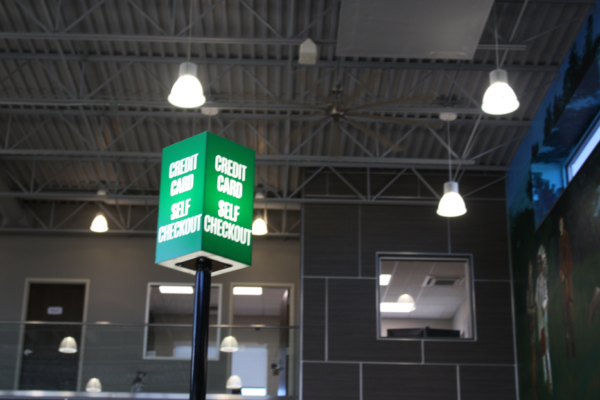The Washington Post is reporting that the White House is finalizing expanded guidelines to allow the phased reopening of the economy, including restaurants and bars, schools and camps, houses of worship, mass transit and certain workplaces. It represents the most detailed guidance to date on the Administration's plan to gradually reopen key sectors of society. The discussion on restaurants -- which is most applicable to the travel center industry -- begins on page 12. Beyond instructions for intensifying cleaning, it includes detailed social distancing instructions, which NATSO has reproduced below.
The 17-page guidance is available here.
Ensure social distancing
Phase 1
- Limit service to drive-through, delivery, or curb-side pick-up options only.
- Provide physical guides, such as tape on floors or sidewalks and to ensure that customers remain at least six feet apart in lines or ask customers to wait in their cars or away from the establishment while waiting to pick up food. Post signs to inform customers of food pickup protocols.
- Consider installing physical barriers, such as sneeze guards and partitions at cash registers, or other food pickup areas where maintaining physical distance of six feet is difficult.
- Restrict the number of employees in shared spaces, including kitchens, break rooms, and offices to maintain at least a six-foot distance between people.
- Rotate or stagger shifts to limit the number of employees in the workplace at the same time.
Phase 2
- Provide drive-through, delivery, or curb-side pick-up options and prioritize outdoor seating as much as possible.
- Reduce occupancy and limit the size of parties dining in together to sizes that ensure that all customer parties remain at least six feet apart (e.g. all tables and bar stools six feet apart, marking tables/stools that are not for use) in order to protect staff and other guests.
- Provide physical guides, such as tape on floors or sidewalks and signage on walls to ensure that customers remain at least six feet apart in lines or waiting for seating.
- Ask customers to wait in their cars or away from the establishment while waiting to be seated. If possible, use phone app technology to alert patrons when their table is ready to avoid touching and use of “buzzers.”
- Consider options for dine-in customers to order ahead of time to limit the amount of time spent in the establishment
- Avoid offering any self-serve food or drink options, such as buffets, salad bars, and drink stations.
- Install physical barriers, such as sneeze guards and partitions at cash registers, bars, host stands, and other areas where maintaining physical distance of six feet is difficult.
- Limit the number of employees in shared spaces, including kitchens, break rooms, and offices to maintain at least a six-foot distance between people.
Phase 3
- Provide drive-through, delivery, or curb-side pick-up options and prioritize outdoor seating as much as possible.
- Consider reducing occupancy and limiting the size of parties dining in together to sizes that ensure that all customer parties remain at least six feet apart (e.g., all tables and bar stools six feet apart, marking tables/stools that are not for use) in order to protect staff and other guests.
- Provide physical guides, such as tape on floors or sidewalks and signage on walls to ensure that customers remain at least six feet apart in lines or waiting for seating.
- If possible, use phone app technology to alert patrons when their table is ready to avoid touching and use of “buzzers.”
- Consider options for dine-in customers to order ahead of time to limit the amount of time spent in the establishment.
- Avoid offering any self-serve food or drink options, such as buffets, salad bars, and drink stations.
- Install physical barriers, such as sneeze guards and partitions at cash registers, bars, host stands, and other areas where maintaining physical distance of six feet is difficult.
Subscribe to Updates
NATSO provides a breadth of information created to strengthen travel plazas’ ability to meet the needs of the travelling public in an age of disruption. This includes knowledge filled blog posts, articles and publications. If you would like to receive a digest of blog post and articles directly in your inbox, please provide your name, email and the frequency of the updates you want to receive the email digest.

